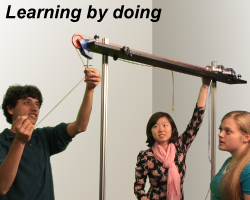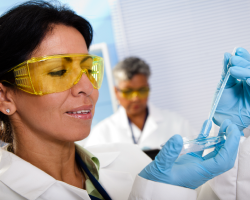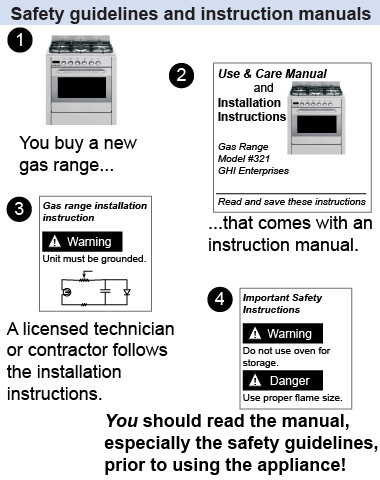|
 Doing physics is a lot more interesting than just reading about it. Humans learned physics by doing it, and personal investigations in physics are an important part of the learning process. Some investigations involve interactive simulations on a tablet or computer. Other investigations use hands-on equipment, allowing you to gain direct familiarity with many physical concepts.
Doing physics is a lot more interesting than just reading about it. Humans learned physics by doing it, and personal investigations in physics are an important part of the learning process. Some investigations involve interactive simulations on a tablet or computer. Other investigations use hands-on equipment, allowing you to gain direct familiarity with many physical concepts. 
|
Whenever you conduct an investigation or participate in a class demonstration, safety should be your top priority. You should be proactive to recognize potential safety hazards in every investigation. Consider the following: - Heat sources can burn the skin and should not be brought near flammable materials such as clothing or drapes.
- Light sources can become quite hot. Light sources (including the Sun) can damage eyesight, so never look directly at a bright light source.
- Moving objects, such as cars rolling down ramps or masses swung around in circles, can hurt people and damage property. Always provide for a safe way for moving objects to stop, and conduct activities outside and away from other people when appropriate.
- Sound sources can damage hearing at high volume so always keep the volume low.
- Electrical and electrostatic systems carry the danger of electric shock if they are not handled and connected properly.
- Field work requires the same safety consideration as indoor lab work. Exercise the same safety precautions when conducting experiments or observations outdoors.

|

| You have only two eyes, and they have to last you for a lifetime, so protect them! Wear goggles or other approved eye protection when conducting physics investigations. Wear laboratory coats, disposable gloves, or other protective clothing—not just to protect your street clothing but to protect your skin should a liquid or chemical spill on you. Always know the location and operation of the fire extinguisher, eye washer, and safety shower in your classroom or laboratory space. All of these rules apply both indoors and outdoors. |

|
Never conduct an experiment or investigation by yourself. Always work with at least one partner. Do not conduct experiments that you have not been authorized to perform. Read through the complete instructions for an investigation before beginning it. Ask your instructor for clarification if any part of a lab is not clear to you or if you believe any activity might be unsafe. 
|
 Instructions for using products safely are often contained in instruction manuals that come with the product. These instruction manuals will come with scientific instruments used in a laboratory or classroom, appliances purchased for home use, or heavy equipment used in a manufacturing facility or job site.
Instructions for using products safely are often contained in instruction manuals that come with the product. These instruction manuals will come with scientific instruments used in a laboratory or classroom, appliances purchased for home use, or heavy equipment used in a manufacturing facility or job site.
Instruction manuals often provide important information for unpacking, setting up, using, repairing, and discarding or recycling equipment. The instructions may tell you that installation of the equipment requires the work to be done by a licensed contractor, such as an electrician or plumber. The first few pages of the manual will usually have a set of important safety guidelines that should be followed. Subsequent pages will provide step-by-step instructions on how to operate the equipment, instrument, or appliance. Many manuals also come with a trouble-shooting guide to help you respond to faulty performance or displayed error messages of the equipment.
Don’t toss the manuals away! Save instruction and safety manuals in a central location so that they are easily accessed when the need arises.
|
In safety procedures, such as those found in instruction manuals, it can be very important to follow every step and in the order listed. Omitting a step or taking the steps out of order could lead to an unsafe condition, such as a chemical spill, or could cause an electrical shock or physical injury.
As an example, consider the instructions for jump starting a car whose battery is dead. The car’s instruction manual contains a list of instructions that includes the kind of equipment to use (another car and appropriately rated jumper cables), the order you should connect the wires between the two cars, the order you start each car, and, finally, how you disconnect the cables once the car is started. If you do not follow the instructions in order, then you could easily receive a dangerous jolt of electricity!
|
| |
|

